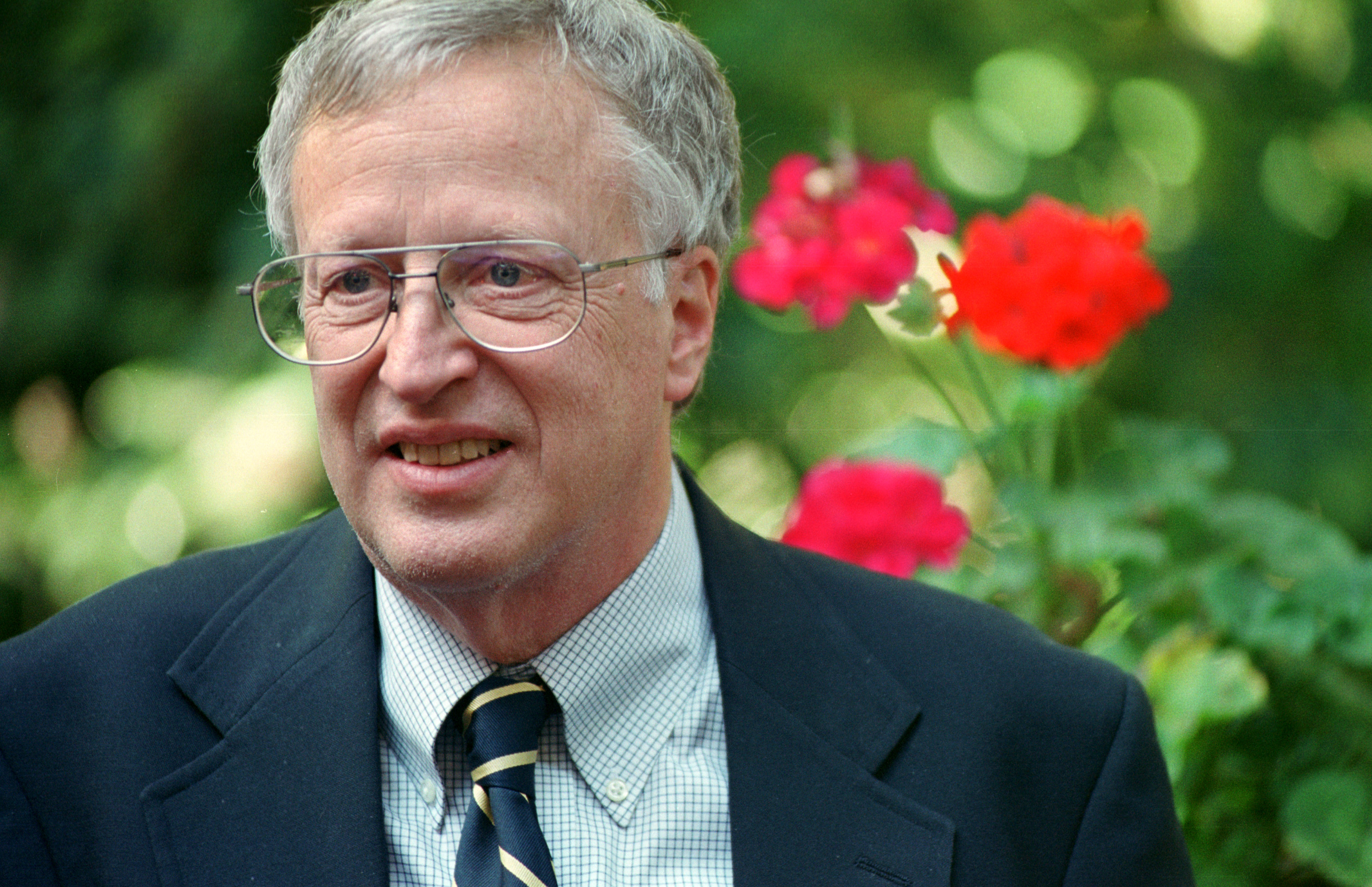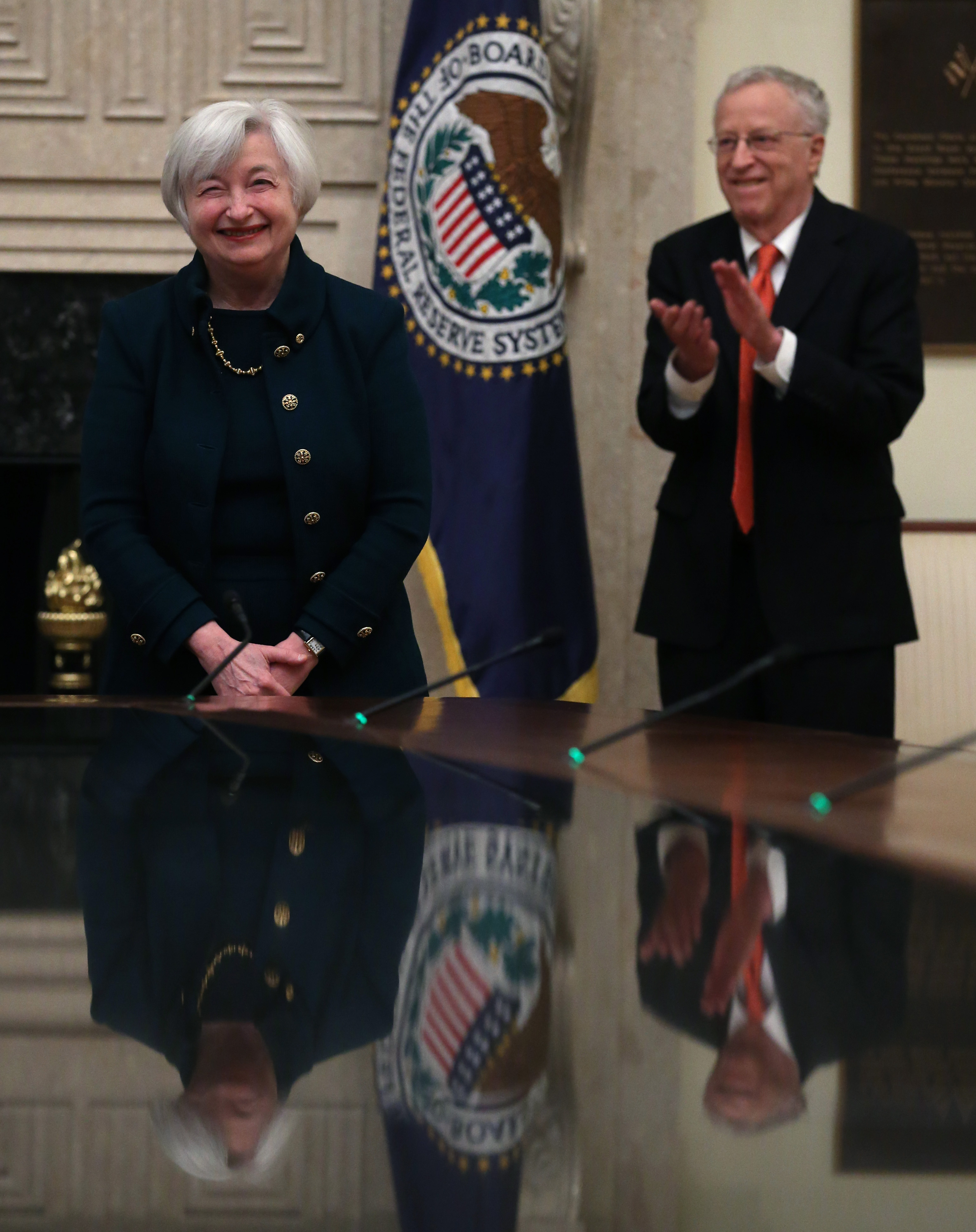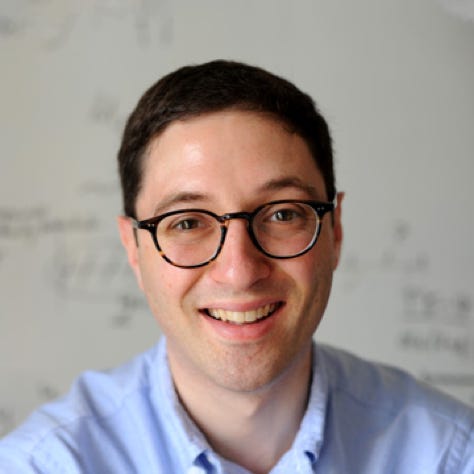
Getty Janet Yellen and husband George Akerlof in 2001.
George Akerlof is a Nobel Prize-winning economist and has been married to fellow economist Janet Yellen for more than 40 years.
Yellen made history as the first woman to serve as the Federal Reserve chair during the Obama administration. She made history again when she was confirmed as the new Treasury Secretary in President Joe Biden’s administration.
Here’s what you need to know about Yellen’s husband:
1. Akerlof Won a Nobel Prize for His Work on How ‘Asymmetric Information’ Impacts Prices

Getty George A. Akerlof, an economics professor at UC Berkley, was awarded the Nobel Prize in economic sciences on October 10, 2001 in Berkley, California.
Akerlof, like his wife, is a renowned professional in the economics fields. He won the Sveriges Riksbank Prize in Economic Sciences in 2001. He shared the prize with fellow economists A. Michael Spence of Stanford University and Joseph E. Stiglitz of Columbia University. According to the Nobel Prize website, Akerlof was awarded for his research on how “asymmetrical information” influences markets and prices. The committee summarized Akerlof’s contribution:
Studied markets where sellers of products have more information than buyers about product quality. He showed that low-quality products may squeeze out high-quality products in such markets, and that prices of high-quality products may suffer as a result.
Akerlof focused on this idea for decades. In his 1970 paper “The Market for Lemons,” Akerlof referred to car sales to demonstrate his theory. He concluded that buyers and sellers alike miss out on better deals when there is a lack of shared information about the quality of the vehicles. In this scenario, the “lemon” is an unreliable vehicle that the seller is simply trying to get rid of. In Akerlof’s theory, the buyer may be willing to pay more for a high-quality vehicle but because there is a chance the car is a “lemon,” the buyer offers a lower price.

GettyPresident George W. Bush congratulates Nobel Laureate Dr. George Akerlof (L) during a ceremony honoring the 2001 US Nobel Laureates on November 27, 2001.
The Library of Economics and Liberty summarized the key point of Akerlof’s paper:
Assume that some cars are “lemons” and some are high quality. If buyers could tell which cars are lemons and which are not, there would be two separate markets: a market for lemons and a market for high-quality cars. But there is often asymmetric information: buyers cannot tell which cars are lemons, but, of course, sellers know.
Therefore, a buyer knows that there is some probability that the car he buys will be a lemon and is willing to pay less than he would pay if he were certain that he was buying a high-quality car. This lower price for all used cars discourages sellers of high-quality cars. Although some would be willing to sell their own cars at the price that buyers of high-quality used cars would be willing to pay, they are not willing to sell at the lower price that reflects the risk that the buyer may end up with a lemon. Thus, exchanges that could benefit both buyer and seller fail to take place and efficiency is lost.
2. Akerlof Taught Economics at UC Berkeley For Most of His Career

Getty UC Berkeley professor George Akerlof, co-winner of the 2001 Nobel Prize in Economics, on October 10, 2001, on the campus in Berkeley, CA.
Attending Yale University became a family tradition in the Akerlof household. His father worked as a chemist at Yale and Akerlof’s older brother also attended. In an autobiographical essay for the Nobel Foundation, Akerloff explained the external forces dictating his choice of school:
Regarding college, I had no choice. My brother had gone to Yale. Even if my brother’s choice were not over-riding for my decision, I would probably have heeded the assistant principal of Lawrenceville, who admonished me that I should not wreck my life by even thinking about going to Harvard instead.
Akerlof explained that he worked on the Yale Daily News for two years as he decided whether to pursue a career in economics or history. After he was denied a position on the newspaper’s board, Akerlof began to focus on math instead but he initially had a tough time with it. He wrote that he was failing an algebra class before a friend of the family, who was a Princeton mathematician, stepped in to tutor him.
After graduating from Yale in 1962 with a bachelor’s degree in economics. Akerlof headed to MIT for graduate school. He earned his Ph.D. in 1966 and subsequently accepted a job as an assistant professor at the
University of California, Berkeley. According to his profile on the school website, Akerlof earned full professor status in 1978. His most recent title was Senior Distinguished Professor Emeritus of Economics, according to the Berkeley economics department website.
Akerlof has also taught at Georgetown’s McCourt School of Public Policy. Akerlof’s bio noted that his “research is based in economics, but it often draws from other disciplines, including psychology, anthropology, and sociology.”
Yellen also taught at UC Berkeley and the spouses sometimes collaborated on research projects. As the Mercury News reported in 2014, Akerlof and Yellen’s real-life search for a good babysitter inspired a 1990 paper about how low wages contribute to unemployment and a worker’s job performance.
3. Akerlof & Yellen Met in the Cafeteria at the Federal Reserve & Married After Less Than a Year

Getty Janet Yellen is sworn in as Federal Reserve Chairman as her husband George Akerlof looks on at the Federal Reserve Building on February 3, 2013.
Akerlof and Yellen’s love story began in a cafeteria at the Federal Reserve. In 1977, Yellen was working as a research economist for the Federal Reserve Board of Governors. According to the Washington Post, Yellen accepted the job after she was denied tenure at Harvard University, where she taught from 1971 to 1976.
Akerlof was temporarily working for the Federal Reserve in Washington, D.C. As Reuters reported, Akerlof had been assigned to the organization’s research division. He and Yellen first crossed paths in the Fed’s cafeteria during the fall of 1977 and it didn’t take long for sparks to fly.
Yellen and Akerlof tied the knot in June 1978, less than a year after meeting. Akerlof had accepted a position at the London School of Economics and wanted Yellen to come with him. He explained their whirlwind romance to the Nobel Foundation:
We liked each other immediately and decided to get married. Not only did our personalities mesh perfectly, but we have also always been in all but perfect agreement about macroeconomics. Our lone disagreement is that she is a bit more supportive of free trade than I. We decided to get married hastily, not only because we had so little doubt about each other, but also for practical reasons. I had already accepted a professorship at the LSE for the coming year and if we were to avoid being separated, Janet would also need to get a job in England too. Luckily, she also was given a tenure-track lectureship at the LSE.
Yellen and Akerlof moved to England in September 1978. They returned to California in August 1980, where Akerlof was still on the faculty at UC Berkeley. Yellen also became a full professor at the university.
4. The Couple’s Son, Robert, Became an Economics Professor

University of WarwickRobert Akerlof.
Akerlof and Yellen have one child together. Their son, Robert Akerlof, was born in June 1981. Robert followed in his parents’ footsteps and pursued a career in economics.
The younger Akerlof earned his Ph.D. from Harvard University before choosing MIT as the place to conduct his postdoctoral research. He currently is an associate professor of economics at the University of Warwick, which is located in Coventry, England. According to his faculty bio, Robert Akerlof’s research is focused on social interaction.
George Akerlof may have reflected on his own fatherly experience when he was writing his 1998 research paper “Men Without Children.” As the Institute for Family Studies summarized, Akerlof theorized that marriage and fatherhood helped men to “settle down.” He wrote that “marriage begins a period in which men devote themselves to the acquisition of human capital whose returns will later be used to support the marriage.” The Institute for Family Studies reported that in the paper, Akerlof also cited evidence that “low marriage rates contribute to single men’s elevated rates of crime, drug addiction, unemployment, mortality, and other problems.”
5. Both of Akerlof’s Parents Had Academic Backgrounds & His Father Worked on the Manhattan Project

Getty Economist George Akerlof (L), husband of Federal Reserve Chair Janet Yellen, listens during an annual Women’s History Month reception honoring Yellen on March 25, 2014 on Capitol Hill.
Akerlof was born on June 17, 1940, to Gosta and Rosalie Akerlof and spent his early years in New Haven, Connecticut. In the autobiographical essay for the Nobel Foundation, Akerlof explained that he was descended from academics on both sides of his family.
His father, Gosta Akerlof, immigrated from Sweden for a postdoctoral degree in chemistry from the University of Pennsylvania. He later became a faculty member at Yale but was never offered tenure. Akerlof wrote that during World War II, his father worked on the Manhattan Project in Dayton, Ohio. After the war, the family moved to Pittsburgh when Gosta started working at the Mellon Institute.
Akerlof explained that his ancestry on his mother’s side could be traced back to Germany and that the family was Jewish. He wrote that his great-grandfather graduated from UC Berkeley in 1873 and went on to become a medical professor at Stanford Medical School. Rosalie’s father continued the family tradition of attending UC Berkeley and became a pharmacologist and cardiologist.
Rosalie also studied chemistry. She attended Yale for graduate school and that is where she met Gosta Akerlof. George Akerlof wrote that his parents met at a “departmental picnic” in 1930.
READ NEXT: Evan Ryan, Tony Blinken’s Wife: 5 Fast Facts